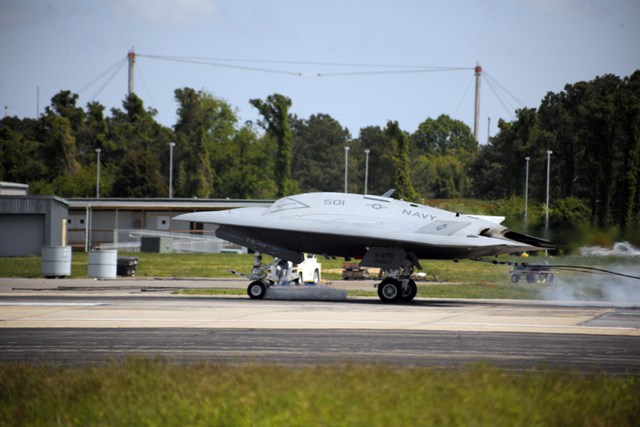The Northrop Grumman X-47B test bed has completed its first landing using an arrestor cable on 4 May, the same method used to land on an aircraft carrier, bringing the aircraft one step closer to an actual carrier landing.
The landing, conducted at the US Navy's flight test airfield at Patuxent River, Maryland, was successful. Called a 'trap' in Navy parlance, the manoeuvre is one of the most challenging tasks Navy pilots regularly conduct. In contrast, the X-47Bs' trap was conducted completely by computer guidance, with human oversight from a landing officer beside the runway.
"It moves us a critical step closer to proving that unmanned systems can be integrated seamlessly into Navy carrier operations," says Capt Jaime Engdahl, the Navy's programme manager. "The entire system has performed very well across a large set of shore-based testing events including aircraft performance, flying qualities, navigation performance, catapult launches, and precision landings designed to stress system operation."
 |
|---|
| Northrop Grumman |
Additional testing, including additional traps on land, are required before the aircraft lands on an aircraft carrier. Trials aboard the USS George Bush are scheduled later in May.
Northrop was awarded the contract to perform a carrier-landing and a separate autonomous refueling demonstration in 2008, although the refueling demonstration was later cancelled. The goal is validate that a large unmanned air vehicle can take-off, land and operate on a carrier deck without disrupting normal operations of manned aircraft.
The USN envisions a fleet of stealthy carrier-based surveillance and strike UAVs to follow the lead of the X-47B. A request of proposals is expected to be issued next month for the design of the UCLASS aircraft.
Source: Flight International























